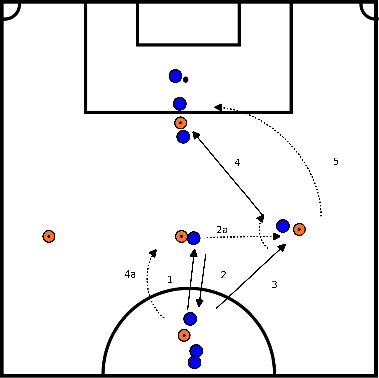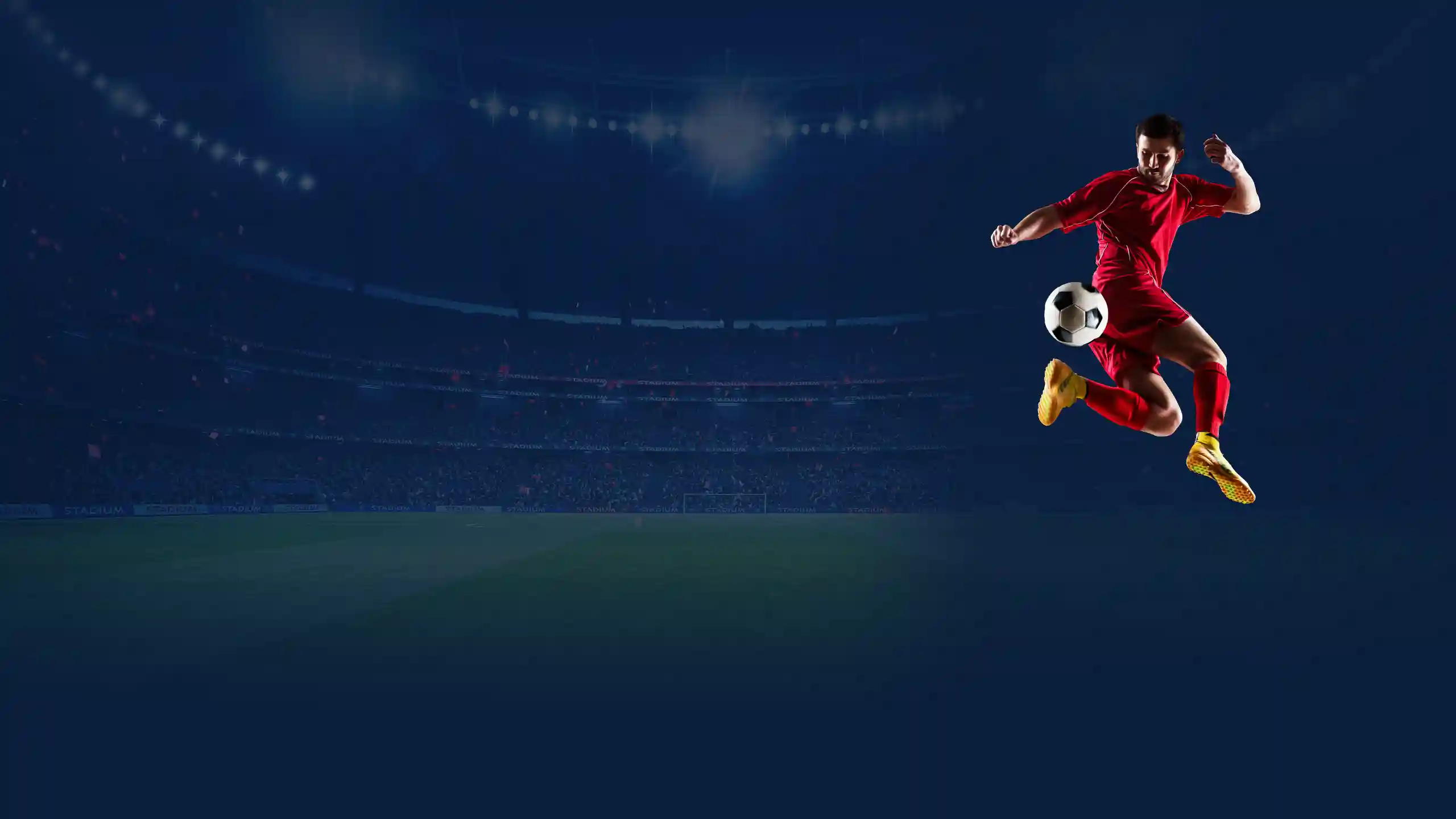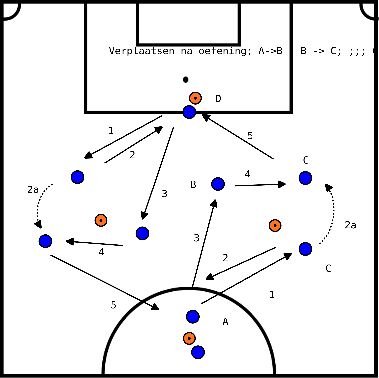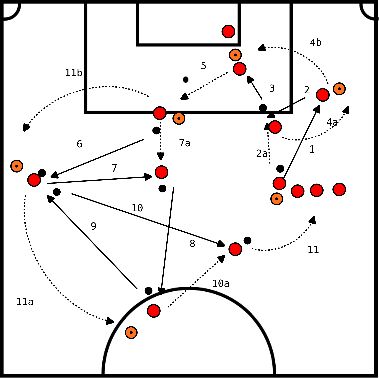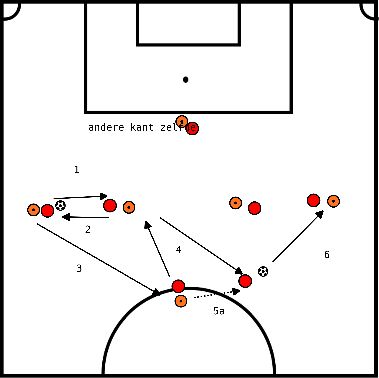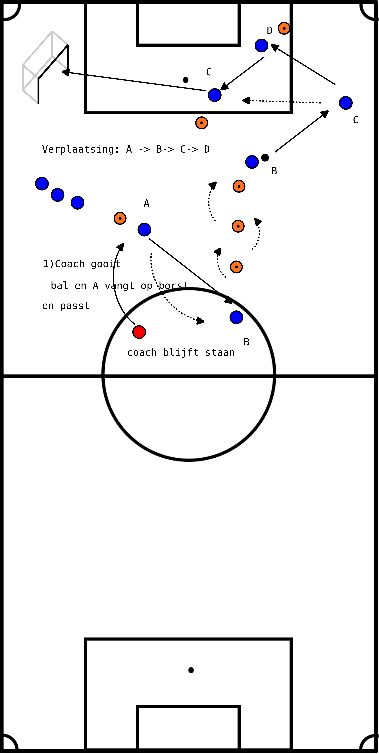View exercises
-
- See picture
- V-formation on 2 sides 3 players
- Player 1a, 2a, 3a and player 1b, 2b, 3b
- 1a rebounds to 2a.
- 1a gets ball after rebounds and passes firmly to 3b.
- 3b lays wide to 2a.
- 2a rounds off.
- 1a to 2a, 2a to 3b, 3b joins A side.
- Other side the same.
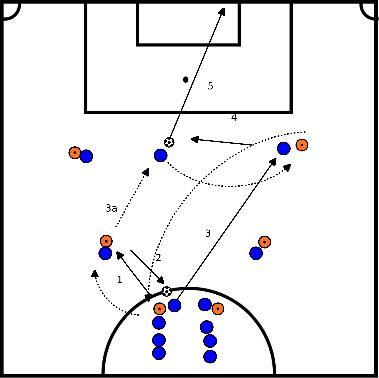
-
For 7 to 12 players
Make a hexagon with the pawns about 12-15 meters away.
At each pawn 1 player but at the 1st - and 4th if 8 players- 2 players.- 1 of the players at the pair starts with the ball.
- The player at the next pawn drops out and asks for the ball.
- The player with the ball plays it in.
- The player asking for the ball turns in and takes the ball.
- The player at the next pawn sinks out and asks for the ball and the player plays the ball in, etc.
- The player who plays the ball in runs on to the next pawn, and so on.
Variations:- Counterclockwise and clockwise
- Instead of turning in and playing in, the player who plays in now asks for a rebound and the player rebounds the ball, then the player who asked for the rebound plays the ball in to the player at the next pawn. The player who rebounded runs on and now asks for a rebound, and so on.
For more than 8 players more people at some pawns or expand the hexagon to an octagon.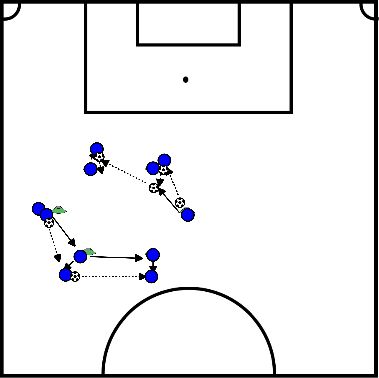
-
- Place pawns as shown in picture.
- Player 1 passes to player 2.
- Player 2 spins open and gives depth pass to back line.
- Player 1 sprints deep to the depth pass and delivers a cross on the edge of 16.
- Player 3 communicates/calls and catches this pass or accepts or rounds directly.
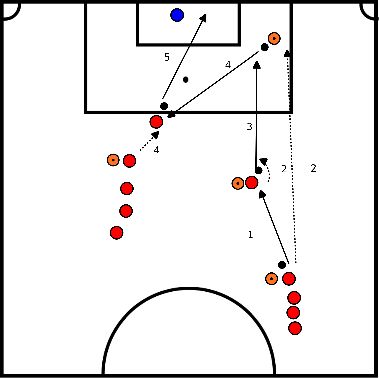
-
- Put goals and pawns as shown in picture.
- Player 1 and player 2 face each other on the line.
- Player 1 passes long and hard to player 2.
- At that moment the duel begins, player 1 runs directly at player 2 who enters the duel.
- Score in 1 of the two little goals, scoring is allowed 1.5 meters from the goal -mark with pawn.
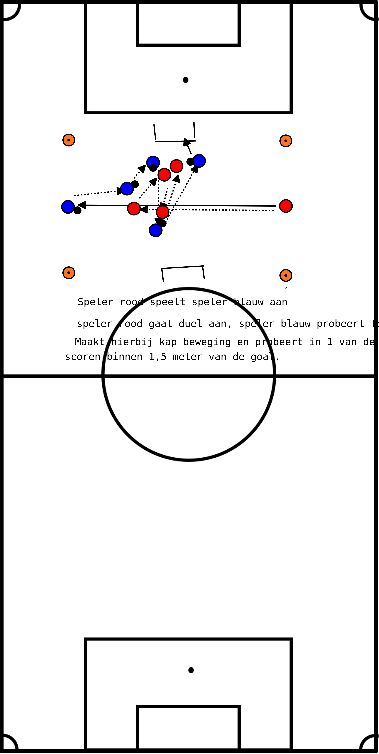
-
- Player 1 rebounds to Player 2.
- Player 1 passes deep high pass to Player 3.
- Player 2 offers to edge 16.
- Player 3 passes across the ground to Player 2.
- Player 2 lays wide on edge 16, Player 3 rounds.
- Player 1 to Player 2, who then plays to Player 3.
- Player 3 joins row other side.
Set out two sides and execute alternately.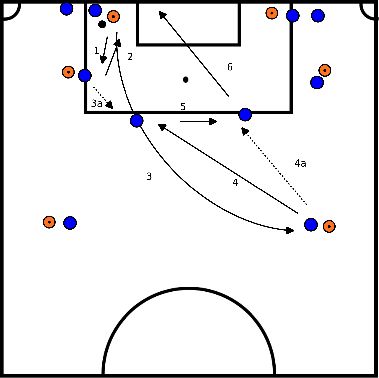
-
- See picture
- Pay attention when assuming the right pylon
- Take right pass left pass together with print
- Other side parallel execution at the same time
